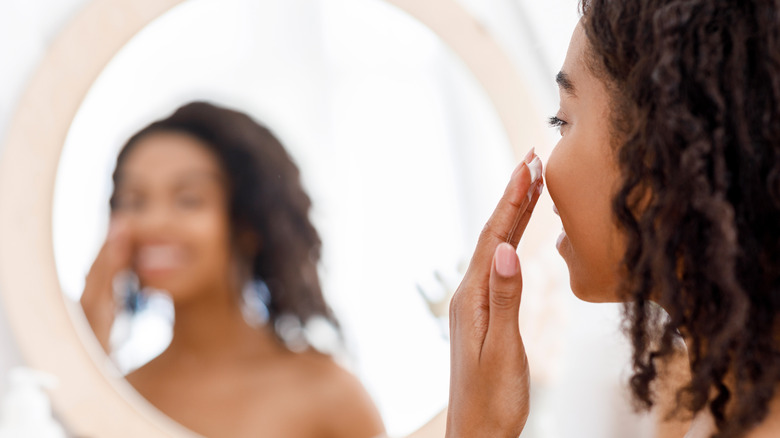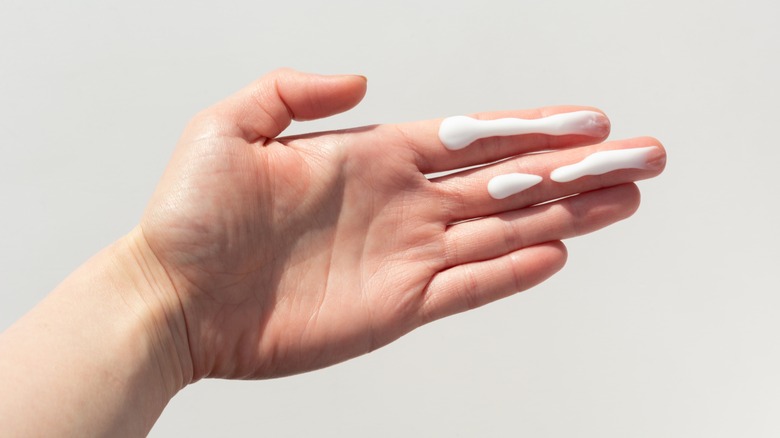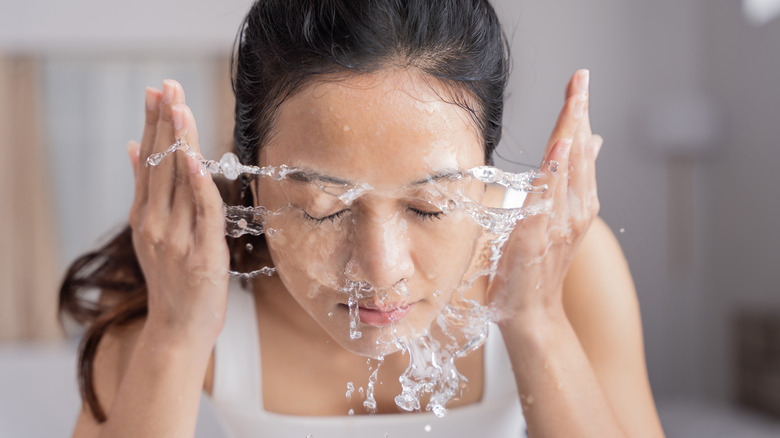Here Is Exactly Where SPF Should Go In Your Skincare Routine
If there's one thing you shouldn't skip when taking care of your skin, it's sun protection. The simplest way to shield your skin from the sun is by using products that contain SPF. SPF stands for sun protection factor, a scale that represents how well your skincare can protect against damaging UV rays and sunburn (via the U.S. Food and Drug Administration).
By now, we all know that using SPF products for the face can prevent a multitude of concerns, from reducing the formation of fine lines to blocking DNA damage that can contribute to skin cancer (via Cosmopolitan). Research published by the American Society for Dermatological Surgery indicates that wearing SPF may even reverse the existing signs of aging in addition to its known anti-aging benefits.
In order to maximize SPF's effectiveness, it's vital to know when to apply it during your morning skincare regimen. Given the number of products that line our medicine cabinets and vanities, it can be challenging to decide in which order to use them. But rest assured that when it comes to SPF, there's a definitive answer as to its place in your skincare lineup.
The best time to apply SPF
According to dermatologist Dr. Shari Sperling, "SPF is the last thing that goes on during your skincare routine," and SPF 30 is the minimum that you should be applying (via InStyle). Dr. Sperling advises that your medicated products should be applied first, followed by your regular moisturizers and sunscreen.
Maybe you're curious about the effectiveness of cosmetics containing SPF. Although SPF is present in various product formulas, including SPF-enriched makeup, experts suggest sticking with sunscreen as your primary defense against the sun. Makeup can serve as a finishing touch, but relying on it alone for sun protection would be impractical and lead to cakey results.
There is some debate amongst the skincare community about the efficacy of layering sunscreen over moisturizer. However, a simple tip can help ease any uncertainties you might have. Dr. Joshua Zeichner, the director of cosmetic and clinical research in dermatology at Mount Sinai Hospital in New York, tells Allure that you can start by applying a moisturizer containing SPF, followed by sunscreen, to ensure your peace of mind.
Remember, when using multiple products that contain SPF, the SPF present in your products won't "stack" or "add" up. For example, if you use an SPF 15 moisturizer and SPF 15 sunscreen together, their total protection is still SPF 15, not SPF 30. To achieve SPF 30 protection, you must apply at least one product containing SPF 30.
How to remove SPF properly
Now that you've perfected the art of sunscreen application, it's time to go over the importance of its removal. SPF-heavy products are notorious for being tricky to take off, and as Dr. Lisa Airan explained to Vogue, "SPF is extremely clogging to the pores." That said, double cleansing your face is the best technique to remove sunscreen residue thoroughly. For those unfamiliar with double cleansing, it's simple: use an oil-based balm or cream first to break down products such as sunscreen or makeup, and follow with a second face wash using a foaming cleanser.
To maintain your skin's good health, bear in mind that SPF should be used year-round, not just on sunny days or at the height of the summer. If you're spending significant time outdoors, don't forget to reapply your sunscreen every two hours (via Johns Hopkins Medicine). Most importantly, aim to be consistent with your SPF usage.


